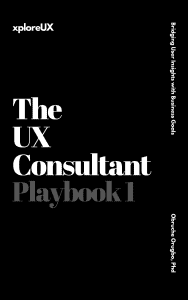
UX in manufacturing is transforming the way companies operate by integrating thoughtful design with process optimisation to drive better performance and efficiency. This article explores advanced UX techniques that can significantly improve manufacturing operations, offering practical insights and real-world examples. By embracing these approaches, manufacturers can streamline processes, reduce errors, and ultimately boost productivity.
A New Approach to Efficiency
UX in manufacturing has emerged as a pivotal tool in modern production systems. As manufacturers strive to remain competitive and agile, integrating user experience design with operational workflows offers a fresh perspective on solving production challenges. This comprehensive guide examines how advanced UX techniques can be adapted to improve efficiency, reduce downtime, and foster innovation in manufacturing environments.
User-centric design principles help in creating interfaces and processes that not only facilitate better user interactions but also support seamless machine operations and data integration. By focusing on the needs of both operators and engineers, manufacturers can develop systems that minimise training time and enhance overall productivity. This detailed discussion aims to provide actionable strategies, enabling companies to refine their processes and achieve long-term success.
Modern production facilities are increasingly turning to design innovations to drive operational excellence. One effective method is the integration of responsive interfaces that deliver real-time data feedback, empowering operators to make informed decisions quickly. When manufacturers adopt UX in manufacturing, the resulting improvements in process clarity and ease of use can lead to reduced error rates and faster response times.
Another technique involves customising dashboards and control panels to suit specific user roles. By tailoring visual displays and functionalities to the needs of different departments, organisations can ensure that vital information is readily accessible, thereby enhancing workflow efficiency. The implementation of interactive training modules further assists staff in adapting to new technologies, reducing the learning curve significantly. These modules are designed to simulate real-life scenarios, allowing users to practice critical tasks in a controlled environment before applying them on the production floor.
Automation and data visualisation are also key components in modern UX strategies. Integrating these elements helps operators monitor production metrics and detect potential issues before they escalate. The use of intuitive graphics and user-friendly alerts contributes to a safer and more effective working environment. In manufacturing facilities where precision and speed are crucial, adopting UX in manufacturing can yield noticeable benefits, such as lower maintenance costs and enhanced operational uptime.
Moreover, a focus on usability testing and iterative design ensures that systems continue to evolve alongside changing user requirements. Engaging end-users in the development process not only increases adoption rates but also fosters a culture of continuous improvement. By applying these advanced techniques, companies can create systems that are resilient and adaptable to future challenges, setting a strong foundation for sustained efficiency improvements.
Implementing advanced UX techniques brings a multitude of benefits to manufacturing operations. The emphasis on human-centred design ensures that systems are not only technically robust but also intuitive and accessible to all users. Companies that invest in UX in manufacturing often experience a significant reduction in operational errors and an increase in overall productivity.
One major advantage is the improved clarity in data presentation. When operators can quickly interpret critical information through well-designed interfaces, the likelihood of mistakes decreases dramatically. Enhanced clarity also aids in streamlining maintenance and troubleshooting processes, as visual cues help pinpoint issues rapidly. This efficiency leads to faster resolution times and minimises production downtime, which is crucial in high-output environments.
Another notable benefit is the improved training experience. By utilising interactive modules and simulation tools, new employees can learn processes faster and with greater confidence. This accelerated training reduces the time and cost associated with onboarding, allowing manufacturers to maintain a skilled workforce with minimal disruption. Furthermore, ongoing training and feedback mechanisms support continuous skill development, ensuring that staff remain competent in operating advanced systems.
Productivity gains are further amplified by the reduction of cognitive overload. Systems designed with user experience in mind simplify complex processes, enabling employees to focus on critical tasks without distraction. As a result, the work environment becomes less stressful and more engaging, leading to higher job satisfaction and lower turnover rates. When companies prioritise UX in manufacturing, they invest not only in technology but also in the human element, which is vital for sustained operational success.
Cost savings are another significant advantage. By minimising errors and downtime, manufacturers can reduce waste and improve resource utilisation. The implementation of intuitive design also means fewer resources are needed for ongoing technical support, allowing organisations to allocate funds towards innovation and further process improvements.
Effective implementation of UX innovations requires a strategic approach that aligns design goals with operational needs. The first step is conducting a thorough analysis of existing processes and identifying areas where design improvements can yield the greatest benefits. This involves gathering input from various stakeholders, including operators, engineers, and management, to ensure that the solutions are practical and well-rounded. Integrating UX in manufacturing at this stage ensures that the redesign addresses real operational challenges.
A successful implementation strategy involves a phased approach. Initially, companies can pilot new interfaces and design improvements in specific departments or production lines. This controlled environment allows for iterative testing and refinement, ensuring that any issues are resolved before a full-scale rollout. By carefully evaluating user feedback during the pilot phase, manufacturers can adjust functionalities and enhance system usability, leading to a more robust final product.
Collaboration between design experts and technical teams is essential throughout the development process. This joint effort guarantees that the technical requirements and user needs are balanced effectively. Regular workshops, feedback sessions, and usability testing sessions help bridge the gap between design theory and practical application. By prioritising UX in manufacturing, companies set a collaborative tone that encourages innovation and continuous learning.
Moreover, the integration of advanced digital tools and prototyping software can streamline the development process. These technologies enable rapid iteration and allow for real-time adjustments based on user feedback. The deployment of cloud-based platforms further supports remote collaboration and data sharing, ensuring that teams across different locations can work together seamlessly. This connectivity is particularly beneficial in large-scale manufacturing operations, where standardising user experience across multiple sites is critical for success.
Once the initial system is in place, continuous monitoring and improvement are key to maintaining operational efficiency. Data analytics and user feedback mechanisms help identify emerging issues and opportunities for enhancement. By adopting a mindset of continuous improvement and keeping a close watch on performance metrics, manufacturers can ensure that the system remains effective and relevant. A commitment to UX in manufacturing not only boosts efficiency but also positions companies to adapt quickly to technological advancements and market changes.
While the benefits of advanced UX techniques are clear, manufacturers often face challenges during the adoption phase. Resistance to change is a common hurdle, particularly among employees who are accustomed to traditional processes. Addressing these concerns requires effective communication and comprehensive training programmes that illustrate the tangible benefits of new systems. By demonstrating how UX in manufacturing can simplify tasks and reduce errors, companies can encourage staff to embrace the transition.
Another challenge is the initial investment in technology and design resources. Although the long-term gains are substantial, the upfront costs can be a barrier for some organisations. It is essential to present a clear business case that highlights the return on investment through improved efficiency and reduced operational expenses. By carefully planning the budget and selecting scalable solutions, manufacturers can implement UX in manufacturing without overwhelming their financial resources.
Integration with existing systems is also a critical factor. New UX solutions must seamlessly interface with current production and management software to avoid disruptions. This requires thorough testing and collaboration with IT teams to ensure compatibility and reliability. Adopting a phased integration strategy can help mitigate risks and ensure that each component of the system is fully functional before moving to the next stage. By focusing on smooth integration, manufacturers can fully realise the potential of UX in manufacturing while maintaining uninterrupted operations.
Moreover, maintaining user engagement over time is vital. As the system evolves, continuous feedback and updates are necessary to keep the design relevant and effective. This ongoing commitment to user experience ensures that the technology adapts to changing operational needs and user preferences. Training sessions, refresher courses, and regular updates help sustain the benefits achieved through the initial implementation, reinforcing the value of UX in manufacturing throughout the organisation.
Effective change management strategies play a significant role in overcoming these challenges. By involving key stakeholders early in the process and fostering a culture of innovation, manufacturers can ease the transition and build support for new initiatives. This proactive approach not only addresses immediate concerns but also establishes a foundation for future advancements.
The continuous evolution of technology means that manufacturers must always be prepared to adapt and innovate. The integration of emerging tools such as augmented reality, machine learning, and advanced data analytics holds great promise for further improvements in production efficiency. Future developments in UX in manufacturing will likely focus on creating even more personalised and adaptive systems that respond dynamically to user needs and environmental changes.
Looking ahead, manufacturers that prioritise user experience are expected to enjoy a competitive advantage. The ongoing shift towards digitalisation and automation means that seamless, intuitive interfaces will become increasingly important in maintaining operational excellence. Organisations that invest in robust UX strategies today are positioning themselves to benefit from future technological breakthroughs, ensuring sustained efficiency and productivity.
In summary, advanced UX techniques are proving to be invaluable in driving efficiency improvements in manufacturing. By placing the user at the centre of design, companies can create systems that not only simplify complex processes but also enhance overall performance. The strategies discussed in this article offer a roadmap for manufacturers looking to implement effective design innovations that deliver measurable results.
Commitment to UX in manufacturing is not merely a technical upgrade—it is a strategic investment in the future of production. With the right approach, manufacturers can overcome challenges, reduce costs, and achieve significant improvements in operational efficiency. As the industry continues to evolve, embracing advanced UX techniques will be crucial for organisations that wish to remain competitive and agile in an ever-changing market.
The journey towards enhanced efficiency begins with recognising the value of user experience in every aspect of the production process. By integrating thoughtful design, comprehensive training, and continuous feedback, manufacturers can ensure that their operations are resilient and ready to meet future demands. A forward-thinking attitude combined with practical implementation strategies will ensure that UX in manufacturing remains a driving force behind operational success.
Ultimately, the adoption of advanced UX techniques represents a progressive shift in manufacturing philosophy. It emphasises not only technical excellence but also the importance of human factors in achieving high-performance production systems. Companies that harness these methods can expect to see a marked improvement in productivity, a reduction in operational errors, and a smoother workflow throughout their facilities. The future belongs to those who innovate and adapt, making UX in manufacturing a vital component of modern industrial strategy.
As manufacturers look towards tomorrow, the integration of cutting-edge design principles with operational processes will continue to yield significant advantages. The benefits—from enhanced data clarity to improved user satisfaction—demonstrate that a focus on user experience is not an optional luxury but an essential element of competitive manufacturing. In closing, embracing UX in manufacturing is a forward-thinking strategy that promises lasting benefits for organisations committed to continuous improvement and operational excellence.
By aligning design innovations with operational goals, manufacturers can not only streamline their processes but also foster a culture of continuous learning and adaptation. The journey may present challenges, but the rewards—increased efficiency, reduced costs, and a more engaged workforce—are well worth the effort. As we move towards an increasingly digital future, the principles of UX in manufacturing will undoubtedly continue to guide the evolution of production strategies, paving the way for smarter, more resilient manufacturing operations.
With a commitment to excellence and a willingness to embrace change, the manufacturing sector is poised for a new era of efficiency and productivity. The strategies outlined in this article provide a clear blueprint for achieving these goals. By investing in advanced UX techniques, manufacturers can transform their operations and set a benchmark for success in an ever-evolving industry. The future of production is bright, and the path forward is illuminated by the innovative spirit embodied in UX in manufacturing.







